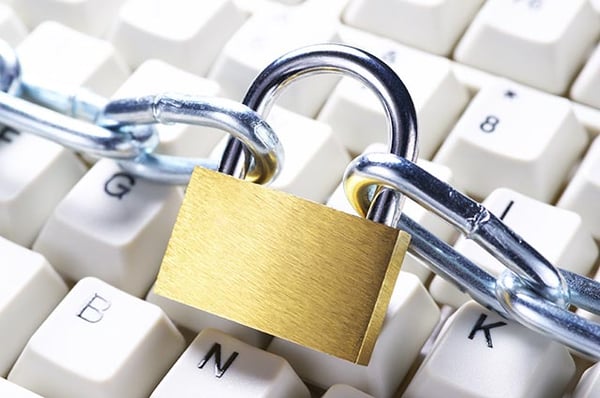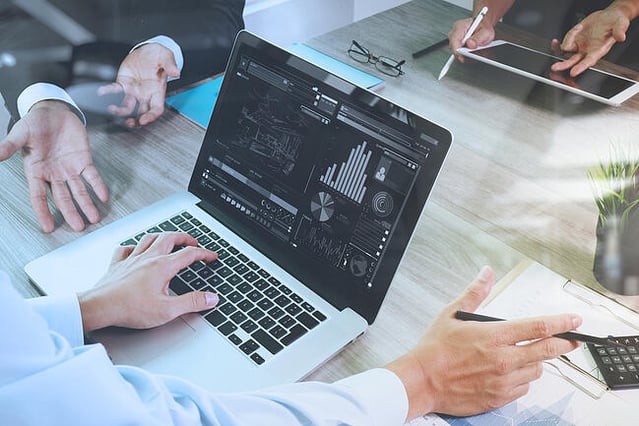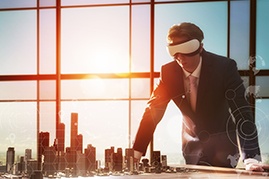
The world of data security is changing rapidly - so rapidly that it can be hard to keep track of all the authentication methods that see wide usage and adoption from product companies. Currently, there are three main categories for security solutions. First, what we know: Your standard alphanumeric passwords and security questions. Second, what we carry: Hand-held items like key cards and ID badges. And third, what we are: Unique bodily identifiers that are nearly impossible to replicate.
We’re all familiar with choosing super-strong passwords and clipping an ID badge on our belt loop before leaving the house. But in general, biometric authentication is still a relatively new category in the security space.
Despite its roots in sci-fi fantasy, techniques like iris scanning, fingerprint matching, and even facial recognition technology, are gradually making their way into the consumer space.
Apple’s iOS has supported fingerprint authentication for years now, and many product companies have designed their applications to support the feature. With the launch of the iPhone X and its Face ID feature, facial recognition is now widely available. Along with Touch ID and a well-chosen passcode, Face ID offers an unparalleled level of security for Apple device owners.
Where else is facial recognition used ?
Until recently, facial recognition was typically associated with the private sector. Classified information and spaces need to be protected by multiple levels of security, and identity verification is a good way to restrict access to all but one particular person.
Here are some other areas where this technology is being utilized:
Payments
MasterCard launched a product allowing users to confirm online payments using an image of themselves - fondly referred to as “selfie pay.” In addition to being convenient, it’s also a great way to reduce the risk of fraud when paying with a mobile device. Facial biometrics is also finding its way into bank ATMs, e-commerce platforms like Alibaba, and retail checkout experiences.
Airports
Security checkpoints are an important - and expected - part of air travel. But facial recognition is making the process less of a hassle at several airports. Amsterdam’s Schipol Airport is leading the pack, allowing passengers to go from check-in all the way to boarding with no physical ticket and only one passport check. Boston Logan and several other airports are launching their own trials, and the rest are watching closely. If the results are good, wide-scale adoption of the technology is sure to follow.
Advertising
In an effort to target their advertising efforts, marketers are leveraging screens at gas stations and retail stores to identify and segment their audience real time. This allows them to show their customers the right message at the right time, resulting in increased profits and a more strategic use of marketing budget.
What could go wrong?
This is what every person who knows the importance of QA is asking. Questioning facial biometrics isn’t negative, it’s just realistic and necessary. What are the challenges of this technology, and how can we anticipate them and fix them?
FAR is far too high
Currently, most facial recognition technology is moderately accurate and both its false acceptance rate (FAR) and false rejection rate (FRR) is too high to be viable. And if it’s not viable or practical, companies will not be willing to invest in the technology.
Hackers
If you’ve been paying attention to the headlines, you know that hackers are already exploiting the weakest spots in facial recognition technology.There’s no fully escaping the dangers, but there are ways to make sure that it meets the latest, most rigorous quality standards.
How QA services can help
The biggest concern for QA partners is the moderate accuracy level. By partnering with the right QA services provider, companies can boost this accuracy while reducing the security vulnerabilities.
Here’s what QA providers can do:
- Review and test algorithms used in facial recognition products
- Create test cases relating to all the different use cases (such as whether or not a person wears glasses, has facial hair, or makes a range of different facial expressions)
- Test the technology according to the standard of the space it will be used in (healthcare, finance, etc.)
Work in the facial biometrics space? As this technology continues to evolve, a reliable QA partner can provide insight and advice about how, what, and when you should be testing.



